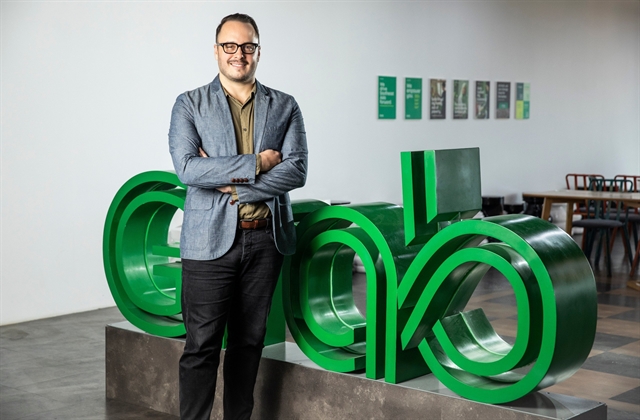Alejandro Osorio, who became managing director of ride-hailing company Grab Vietnam in December last year, has experience of building business strategies on a regional scale.
Alejandro Osorio, who became managing director of ride-hailing company Grab Vietnam in December last year, has experience of building business strategies on a regional scale.
Việt Nam News spoke with Osorio about his company’s strategies since he took over.

It has been nearly a year since you joined Grab Vietnam. What do you think about the Vietnamese market and Grab's performance in Vietnam in that period?
Currently, we see a lot of economic challenges in Việt Nam and globally. Right now, the appetite for spending is a bit depressed. Meanwhile, more drivers are looking to us as a source of potential income.
As we talk about the strategy for today, we started to observe those signals actually coming out of tech, and because of that we started to reprioritise and shift our focus to affordability.
We think that is the best way to stay relevant to consumers because they are still spending, but are more thoughtful about how they spend.
And in order for us to continue to drive that level of adoption that we have an ambition for, we need to ensure that we match that need for affordability and keep relevant services.
We are now providing a wider range of services for a variety of users, from those seeking high convenience to those seeking high affordability.
Our target is to become more relevant and more accessible for those users in the long term.
We can create a true digital economy landscape that we aspire for. That in turn, I think, will continue to make us the preferred choice for driver partners and merchant partners who are seeking to earn better incomes as well.
Affordability is one of the key strategies of Grab Vietnam now. Please tell us about that?
Affordability is very important to us now. Why?
If you recall, we actually talked about affordability being one of our four key strategic pillars for this year and next year a few months ago.
We believe there is still so much opportunity to drive digital adoption among users in Việt Nam.
In addition, we think there is so much benefit that digital platforms can unlock both for users and drivers alike.
And the road ahead is still quite long.
With the evolving economic landscape and the challenges that have presented themselves, it is even more important for us to focus on affordability now.
So Grab is a company that has been putting a huge amount of effort into developing the right technologies to help unlock those affordable options for users across all of our services.

Please tell us about plans to expand Grab’s business to other cities and provinces in Vietnam?
About 80 per cent of the Vietnamese population lives outside Hà Nội and HCM City. We need to meet users where they are and expand further and penetrate deeper into those markets.
We're already in 50 plus cities nation-wide but that is not enough.
We have to really go on the ground in every single market and definitely in every region to make sure that we have what it takes to drive that adoption there.
Obviously, Grab Vietnam has matured over the years to the point where we know that to build those markets, it is not about throwing subsidies but about making sure that we have the right value proposition for those users.
And so you can see that a lot of these different capabilities that we are creating are also going to be key enablers for unlocking that massive adoption in those cities in the long term.
But definitely, if we are thinking 5-10 years ahead, adoption outside of the two cities is a must for us to really deliver on our mission to drive mass digital adoption for users and support the growth of Vietnam's digital economy.
What does the Vietnamese market mean for Grab’s overall business?
For nine years Việt Nam has been a really critical market for us.
Việt Nam was one of the earliest markets we entered, and we have a strong commitment in terms of tech investment, people investment, to continue to support the development of this market.
Besides, Việt Nam was also a place of many firsts.
For instance, GrabBike originated in Việt Nam.
The country is actually a really interesting market to further enhance Grab’s regional affordability strategy.
Can you tell us about Grab Vietnam’s plans for 2024?
I think next year will also remain challenging. Our ambitions remain unchanged. I think we really want to make sure that we can become extremely relevant to users across the country.
So you'll continue to see that focus from us.
Our core services, whether it's GrabFood, GrabMart, GrabCar, GrabBike, GrabExpress will all be pushed quite heavily.
So we want to penetrate better into the daily commute, into how people move around, how people eat, and so on. — VNS





